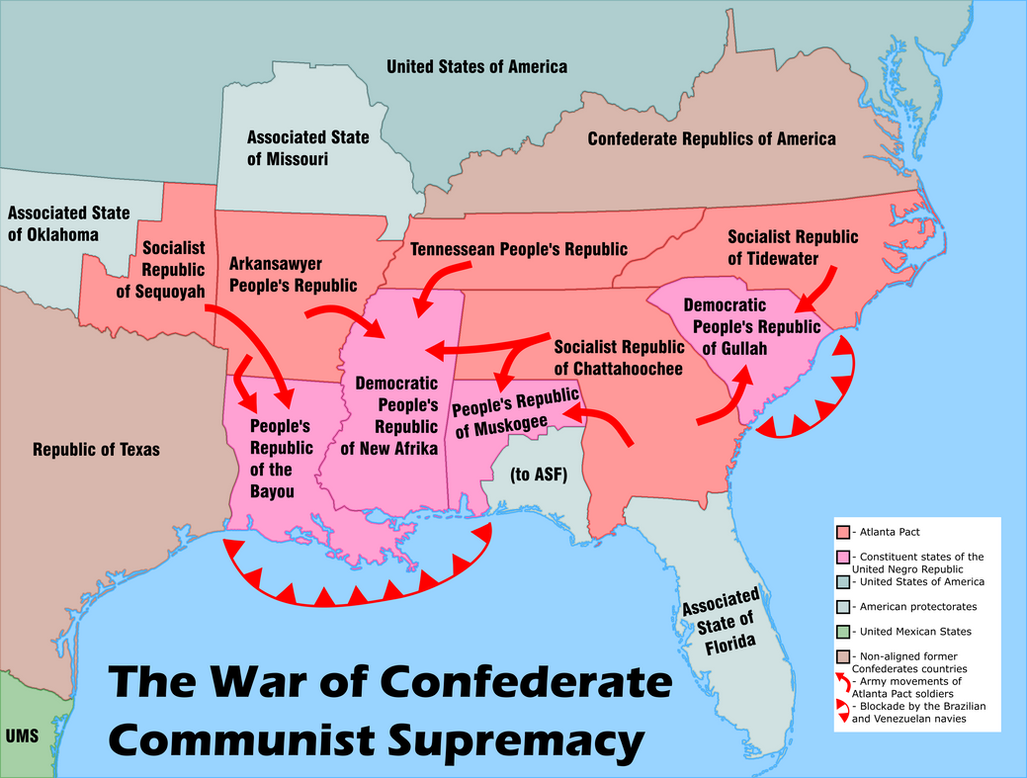Upvoteanthology
Donor
MotF 160: Somebody Once Told Me
The Challenge
Make a map of a conflict or war between puppet states in a larger alliance. The entire alliance could also be participating in the war, or it could be the leaders of the alliance forcing their smaller allies to fight the other side. Examples would include essentially everything from WWI, or to include a non-OTL example, maybe a US puppet of Quebec fighting a British puppet of Canada.
The Restrictions
There are no restrictions on when the PoD of your map should be. Fantasy, sci-fi, and future maps are allowed.
If you're not sure whether your idea meets the criteria of this challenge, please feel free to PM me or comment in the main thread. Sometimes it isn't as clear as I intend it to be.
---
Entries will end for this round when the voting thread is posted on Sunday, July 16th, 2017.
---
ALL DISCUSSION ON ENTRIES MUST TAKE PLACE IN THE MAIN THREAD. PLEASE.
Any discussion must take place in the main thread. If you post anything other than a map entry (or a description accompanying a map entry) in this thread then you will be asked to delete the post.
Remember to vote on the previous MotF round!
The Challenge
Make a map of a conflict or war between puppet states in a larger alliance. The entire alliance could also be participating in the war, or it could be the leaders of the alliance forcing their smaller allies to fight the other side. Examples would include essentially everything from WWI, or to include a non-OTL example, maybe a US puppet of Quebec fighting a British puppet of Canada.
The Restrictions
There are no restrictions on when the PoD of your map should be. Fantasy, sci-fi, and future maps are allowed.
If you're not sure whether your idea meets the criteria of this challenge, please feel free to PM me or comment in the main thread. Sometimes it isn't as clear as I intend it to be.
---
Entries will end for this round when the voting thread is posted on Sunday, July 16th, 2017.
---
ALL DISCUSSION ON ENTRIES MUST TAKE PLACE IN THE MAIN THREAD. PLEASE.
Any discussion must take place in the main thread. If you post anything other than a map entry (or a description accompanying a map entry) in this thread then you will be asked to delete the post.
Remember to vote on the previous MotF round!
Last edited:


